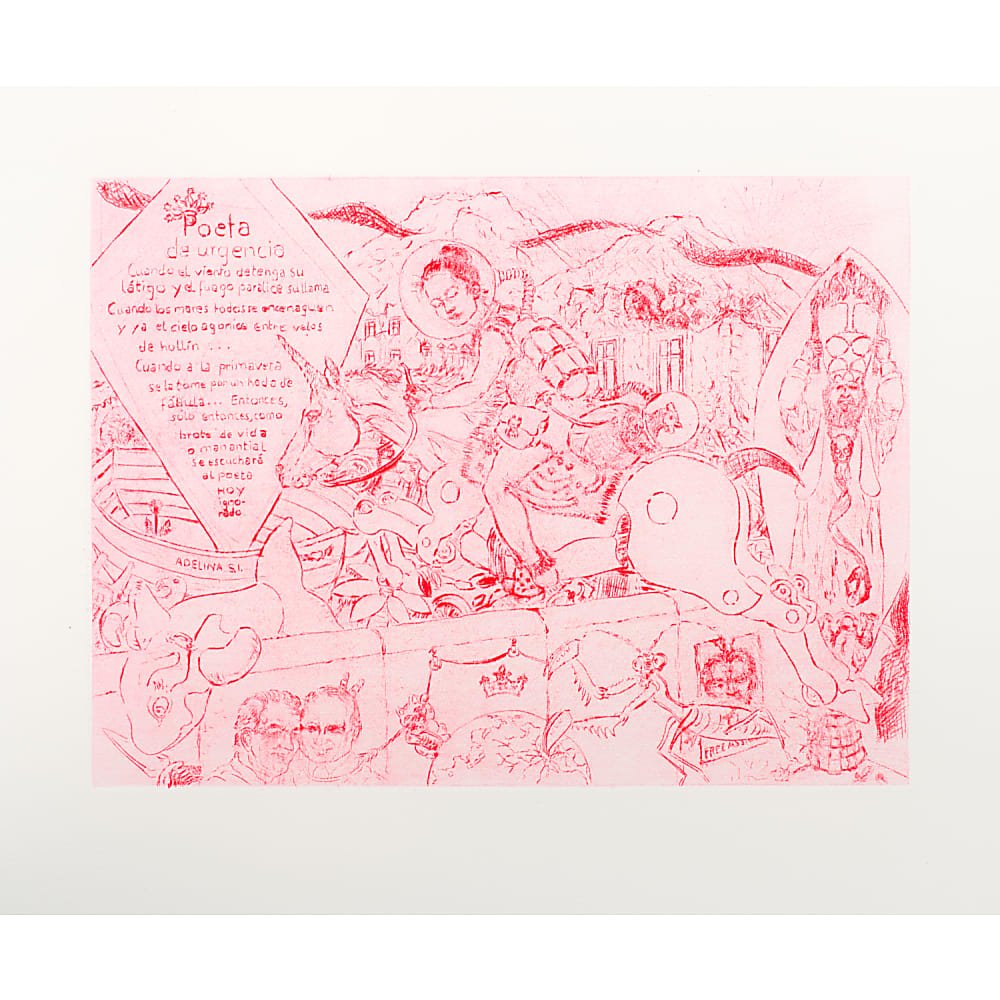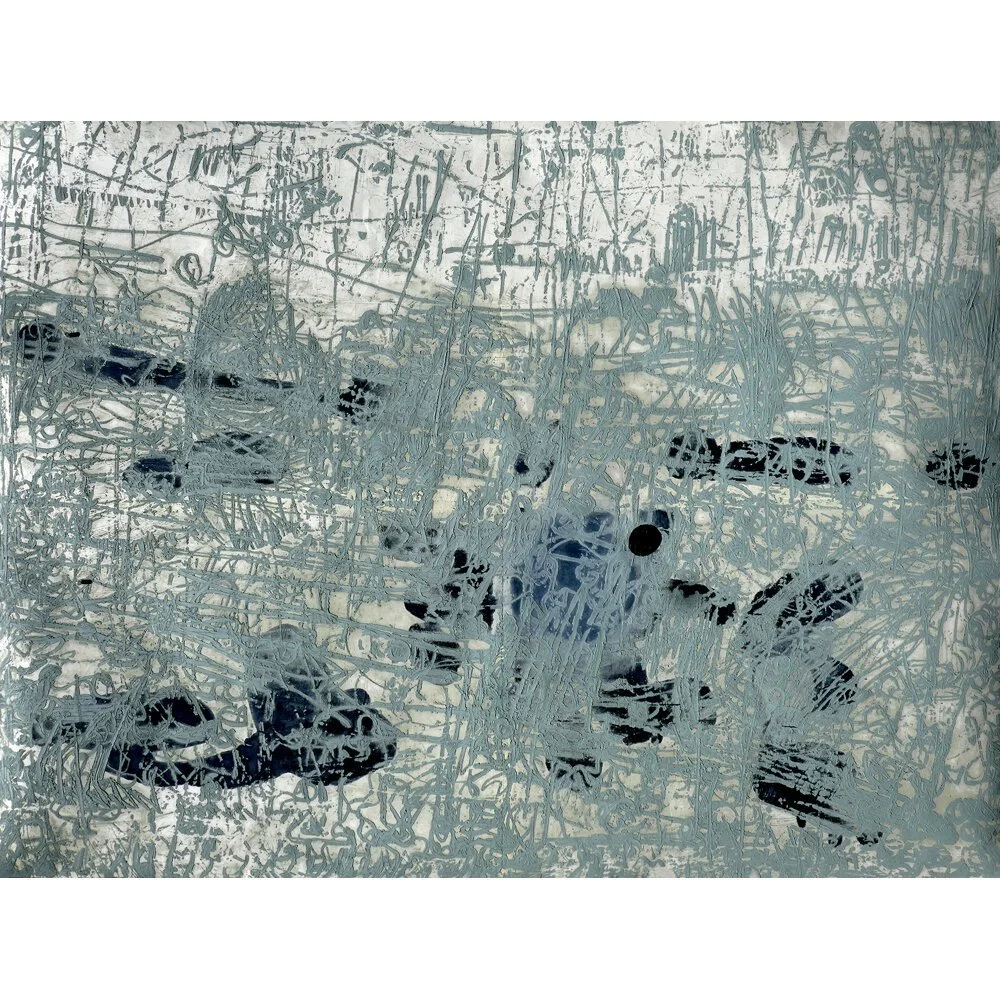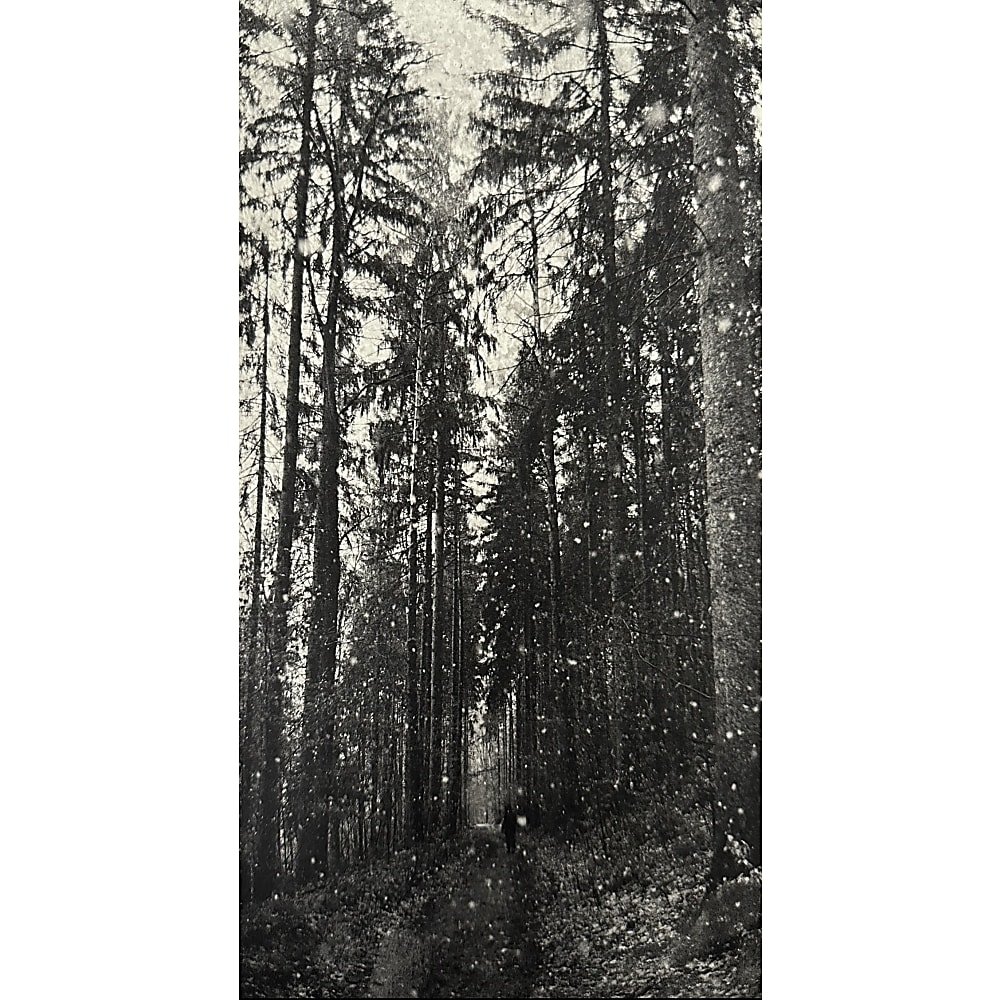Iris Trostel Santander
£0.00
Iris Trostel Santander plays with traditional imagery to explore the cultural bias within gender, enviroment and architecture.
Single-raised as a half orphan by an unemployed spanish mother and poet in Berlin in the 90ies, she internalizes at an early age both, an outsider perspective on the role-model of middle-class heteronormative families, but also an insider perspective on artistic self-expression, as well as pluralistic and queer life-concepts of the cultural underground.
In her open intaglio cicle „His_Story“ she dives into the collective memory of European art and rearranges its parts to new art pieces, which reflect upon neglected problems of her culture. Having chosen the language of analogue printmaking, Iris Trostel Santander stands in the tradition of its subversive potential.
Iris Trostel Santander was trained as an architect (BA) and an artist in different European citities, such as Vilnius (Art Academy), Potsdam (University of Applied Sciences), Naples (Federico II.) and Halle/Saale (Burg Giebichenstein University of Art & Design), where she post-graduated in Visual Arts, specializing in intaglio. Since then, she works as a full-time artist, self-taught on non-toxic-intaglio. She received art-grants and exhibits frequently within Germany. Highlights include, the German International Printmaking Triennial in Frechen, a solo exhibition at Kunstverein Glinde and the Miniprint Exhibition at Galleri Heike Arndt in Berlin.
Single-raised as a half orphan by an unemployed spanish mother and poet in Berlin in the 90ies, she internalizes at an early age both, an outsider perspective on the role-model of middle-class heteronormative families, but also an insider perspective on artistic self-expression, as well as pluralistic and queer life-concepts of the cultural underground.
In her open intaglio cicle „His_Story“ she dives into the collective memory of European art and rearranges its parts to new art pieces, which reflect upon neglected problems of her culture. Having chosen the language of analogue printmaking, Iris Trostel Santander stands in the tradition of its subversive potential.
Iris Trostel Santander was trained as an architect (BA) and an artist in different European citities, such as Vilnius (Art Academy), Potsdam (University of Applied Sciences), Naples (Federico II.) and Halle/Saale (Burg Giebichenstein University of Art & Design), where she post-graduated in Visual Arts, specializing in intaglio. Since then, she works as a full-time artist, self-taught on non-toxic-intaglio. She received art-grants and exhibits frequently within Germany. Highlights include, the German International Printmaking Triennial in Frechen, a solo exhibition at Kunstverein Glinde and the Miniprint Exhibition at Galleri Heike Arndt in Berlin.
Iris Trostel Santander plays with traditional imagery to explore the cultural bias within gender, enviroment and architecture.
Single-raised as a half orphan by an unemployed spanish mother and poet in Berlin in the 90ies, she internalizes at an early age both, an outsider perspective on the role-model of middle-class heteronormative families, but also an insider perspective on artistic self-expression, as well as pluralistic and queer life-concepts of the cultural underground.
In her open intaglio cicle „His_Story“ she dives into the collective memory of European art and rearranges its parts to new art pieces, which reflect upon neglected problems of her culture. Having chosen the language of analogue printmaking, Iris Trostel Santander stands in the tradition of its subversive potential.
Iris Trostel Santander was trained as an architect (BA) and an artist in different European citities, such as Vilnius (Art Academy), Potsdam (University of Applied Sciences), Naples (Federico II.) and Halle/Saale (Burg Giebichenstein University of Art & Design), where she post-graduated in Visual Arts, specializing in intaglio. Since then, she works as a full-time artist, self-taught on non-toxic-intaglio. She received art-grants and exhibits frequently within Germany. Highlights include, the German International Printmaking Triennial in Frechen, a solo exhibition at Kunstverein Glinde and the Miniprint Exhibition at Galleri Heike Arndt in Berlin.
Single-raised as a half orphan by an unemployed spanish mother and poet in Berlin in the 90ies, she internalizes at an early age both, an outsider perspective on the role-model of middle-class heteronormative families, but also an insider perspective on artistic self-expression, as well as pluralistic and queer life-concepts of the cultural underground.
In her open intaglio cicle „His_Story“ she dives into the collective memory of European art and rearranges its parts to new art pieces, which reflect upon neglected problems of her culture. Having chosen the language of analogue printmaking, Iris Trostel Santander stands in the tradition of its subversive potential.
Iris Trostel Santander was trained as an architect (BA) and an artist in different European citities, such as Vilnius (Art Academy), Potsdam (University of Applied Sciences), Naples (Federico II.) and Halle/Saale (Burg Giebichenstein University of Art & Design), where she post-graduated in Visual Arts, specializing in intaglio. Since then, she works as a full-time artist, self-taught on non-toxic-intaglio. She received art-grants and exhibits frequently within Germany. Highlights include, the German International Printmaking Triennial in Frechen, a solo exhibition at Kunstverein Glinde and the Miniprint Exhibition at Galleri Heike Arndt in Berlin.
Iris Trostel Santander plays with traditional imagery to explore the cultural bias within gender, enviroment and architecture.
Single-raised as a half orphan by an unemployed spanish mother and poet in Berlin in the 90ies, she internalizes at an early age both, an outsider perspective on the role-model of middle-class heteronormative families, but also an insider perspective on artistic self-expression, as well as pluralistic and queer life-concepts of the cultural underground.
In her open intaglio cicle „His_Story“ she dives into the collective memory of European art and rearranges its parts to new art pieces, which reflect upon neglected problems of her culture. Having chosen the language of analogue printmaking, Iris Trostel Santander stands in the tradition of its subversive potential.
Iris Trostel Santander was trained as an architect (BA) and an artist in different European citities, such as Vilnius (Art Academy), Potsdam (University of Applied Sciences), Naples (Federico II.) and Halle/Saale (Burg Giebichenstein University of Art & Design), where she post-graduated in Visual Arts, specializing in intaglio. Since then, she works as a full-time artist, self-taught on non-toxic-intaglio. She received art-grants and exhibits frequently within Germany. Highlights include, the German International Printmaking Triennial in Frechen, a solo exhibition at Kunstverein Glinde and the Miniprint Exhibition at Galleri Heike Arndt in Berlin.
Single-raised as a half orphan by an unemployed spanish mother and poet in Berlin in the 90ies, she internalizes at an early age both, an outsider perspective on the role-model of middle-class heteronormative families, but also an insider perspective on artistic self-expression, as well as pluralistic and queer life-concepts of the cultural underground.
In her open intaglio cicle „His_Story“ she dives into the collective memory of European art and rearranges its parts to new art pieces, which reflect upon neglected problems of her culture. Having chosen the language of analogue printmaking, Iris Trostel Santander stands in the tradition of its subversive potential.
Iris Trostel Santander was trained as an architect (BA) and an artist in different European citities, such as Vilnius (Art Academy), Potsdam (University of Applied Sciences), Naples (Federico II.) and Halle/Saale (Burg Giebichenstein University of Art & Design), where she post-graduated in Visual Arts, specializing in intaglio. Since then, she works as a full-time artist, self-taught on non-toxic-intaglio. She received art-grants and exhibits frequently within Germany. Highlights include, the German International Printmaking Triennial in Frechen, a solo exhibition at Kunstverein Glinde and the Miniprint Exhibition at Galleri Heike Arndt in Berlin.






